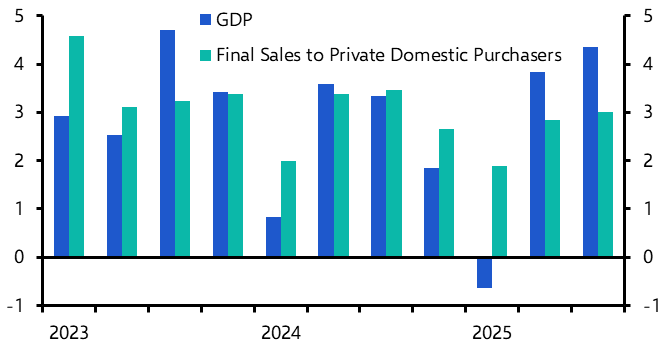Do policymakers have sufficient ammunition to fight the next economic downturn? It’s a question that’s vexing economists - and at first sight the answer appears to be “no”.
After all, on the fiscal side, public debt ratios in most developed economies are still well above their pre-2008 levels and in some cases (notably the US) budget deficits are widening too.
Meanwhile, on the monetary side, interest rates are already at, or close to, the zero bound and central bank balance sheets remain bloated. Underlying this is a more fundamental issue facing monetary policymakers, which is that the neutral level of real interest rates – or R* in the jargon – has fallen in most advanced economies over the past decade. Accordingly, monetary conditions start to become restrictive at a lower real interest rate. One consequence is that, in the absence of a sustained rise in inflation, central banks will continue to struggle to get nominal interest rates much above their zero lower bound - limiting their scope to then lower them in economic downturns.
Yet while all of this creates challenges for policymakers, it is far from a lost cause. For a start, these issues relate primarily to advanced economies. Concerns about the outlook for China are mounting but policymakers there have much greater scope to respond. Instead, as we have argued before, the bigger concern is Beijing’s reluctance, rather than capacity, to loosen policy.
Meanwhile, although policymakers in the developed world have less room for manoeuvre, they are still far from impotent. (For a detailed analysis of why, see here.) Central banks still have a range of tools at their disposal, including additional QE, yield curve control and – more radically – changes to their policy frameworks (for example to target the price level rather than inflation).
At the same time, the structural fall in interest rates should enable governments to sustain higher debt burdens. (The key part of the fiscal arithmetic is that long-term interest rates are lower than trend nominal GDP growth in most countries.) Accordingly, we suspect that, in the face of an economic downturn, bond markets in most of the developed world would tolerate additional fiscal stimulus.
Finally, there is an international dimension to all of this. As I argued a few weeks ago, steps by a handful of countries to reduce their current account surpluses would provide a significant shot in the arm to global demand, which would help to counter a widespread slowdown in the world economy.
Stepping back, we have two bigger concerns. The first is that the response to any slowdown is likely to require governments to shoulder a higher debt burden and central banks to delve further into their unconventional policy toolkit. What’s more, the deeper the downturn, the further they’ll have to go. It’s possible that this could run into political or institutional resistance.
The second concern is that, while most governments have some fiscal room, this is not true of several peripheral economies in the euro-zone where debt burdens are high and national central banks can’t stand behind the government bond market. The weakest link in this regard is, of course, Italy. Couple this with the fact that the ECB has historically been the most conservative of the world’s central banks, and the sharp deterioration in the latest euro-zone data starts to look a lot more worrying.
In case you missed it:
(Requires login)
- Our Chief Emerging Markets Economist, William Jackson, argues that EMs are now facing a synchronised downturn in growth.
- Our Emerging Europe team analyses how a tightening of US sanctions would affect Russia’s economy.
- Our property team assesses the effect Brexit uncertainty is having on the UK commercial property market.



